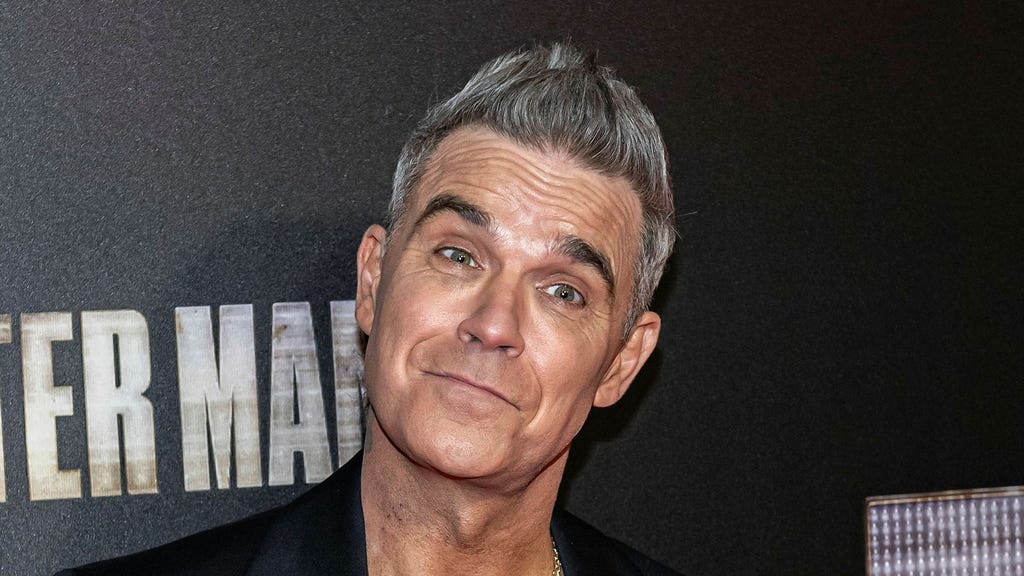The Unconventional Biopic of a Pop Icon: Robbie Williams as a CGI Ape
"Better Man," a biopic chronicling the turbulent life and career of pop star Robbie Williams, takes a decidedly unorthodox approach to storytelling. Instead of a traditional portrayal, the film utilizes a CGI-generated ape, layered over the performance of actor Jonno Davies, to represent Williams throughout his journey. This innovative choice, far from being a mere gimmick, allows for a unique and emotionally resonant exploration of the singer’s inner world, his vulnerabilities, and the relentless drive that propelled him to stardom. Williams himself provides the voice-over narration, guiding the audience through the highs and lows of his life, while the ape serves as a visual metaphor for the internal struggles he faced. This distancing technique, paradoxically, creates a more intimate and revealing portrait, allowing viewers to connect with the emotional core of the story without the distractions of a conventional biographical depiction.
The film traces Williams’s trajectory from his early days as a member of the phenomenally successful boy band Take That to his tumultuous solo career. It delves into the intoxicating allure of fame, the pressures that come with it, and the destructive patterns that often accompany rapid success, particularly for young artists. "Better Man" doesn’t shy away from depicting Williams’s struggles with addiction, his strained relationships, and the psychological toll of living in the public eye. The narrative highlights the conflict between his public persona as a charismatic entertainer and his private battles with self-doubt and insecurity. The film portrays the recurring cycle of triumph and despair, the relentless pursuit of validation, and the ultimate quest for self-acceptance and inner peace.
The use of the CGI ape is more than just a visual representation; it becomes a powerful symbol of Williams’s self-perception. He has often described himself as a "performing monkey," reflecting a sense of being trapped by the demands of the entertainment industry. The ape, therefore, embodies the duality of his experience: the exhilaration of performance alongside the underlying sense of vulnerability and exploitation. The digital creation captures the full spectrum of human emotions, from the joy of performing to the depths of despair, allowing the audience to empathize with the complex inner life of the artist. This unique cinematic approach allows for a deeper exploration of the psychological impact of fame, presenting a nuanced perspective on the struggles faced by those who live their lives under constant scrutiny.
The film also explores the dynamic within Take That, depicting the tensions that arose from Williams’s increasingly erratic behavior, fueled by his struggles with addiction. His departure from the band, a pivotal moment in his career, is portrayed not as a simple act of rebellion but as a consequence of his inner turmoil and the unsustainable pressure of maintaining a manufactured image. The subsequent relationship with All Saints singer Nicole Appleton further underscores the destructive patterns in his life, highlighting the challenges he faced in maintaining healthy relationships amidst the chaos of fame. “Better Man” examines the price of success, the toll it takes on personal relationships, and the difficult journey towards self-discovery and redemption.
Director Michael Gracey emphasizes the importance of Williams’s personal narrative in shaping the film. Through extensive conversations with the singer, Gracey gained insight into the emotional landscape of his life, allowing him to create a compelling and authentic portrayal. The CGI technology, while visually striking, serves primarily to enhance the emotional impact of the story, offering a glimpse into Williams’s inner thoughts and feelings. The film explores the universal themes of ambition, vulnerability, and the search for meaning, making it relatable to audiences beyond the realm of pop music fandom.
"Better Man" delves into the nature of stardom, questioning the forces that drive individuals to seek the spotlight. Williams himself acknowledges the complex interplay of talent, charisma, self-belief, and vulnerability that contribute to the making of a star. The film suggests that the very qualities that draw audiences to performers can also be their undoing, leading to a cycle of self-destruction if not tempered by self-awareness and a strong support system. The film challenges the romanticized notion of fame, revealing the darker side of the entertainment industry and the psychological challenges faced by those who navigate its treacherous waters. Ultimately, "Better Man" is a story about the human condition, the search for identity, and the long road to finding peace and fulfillment, both personally and professionally.














